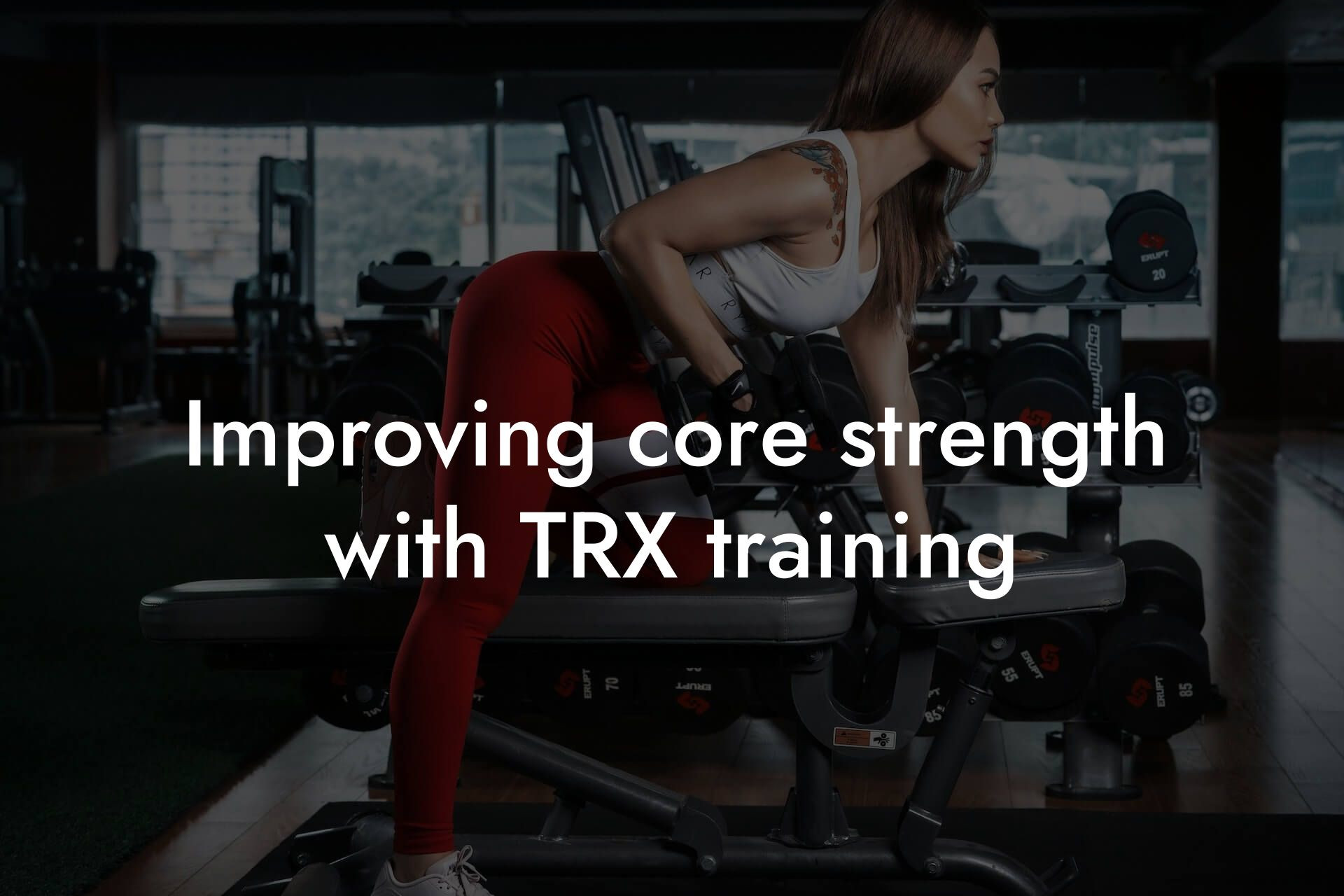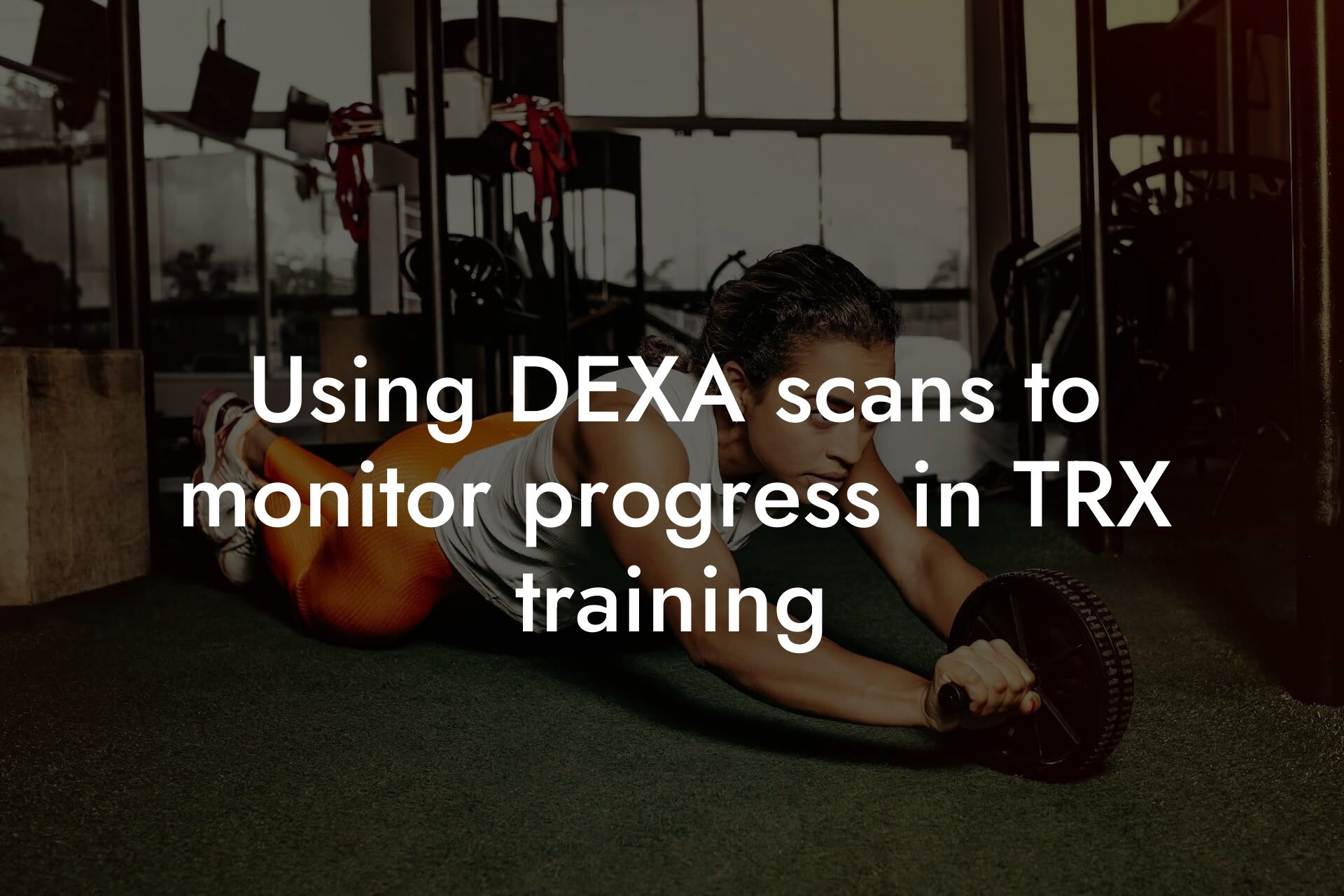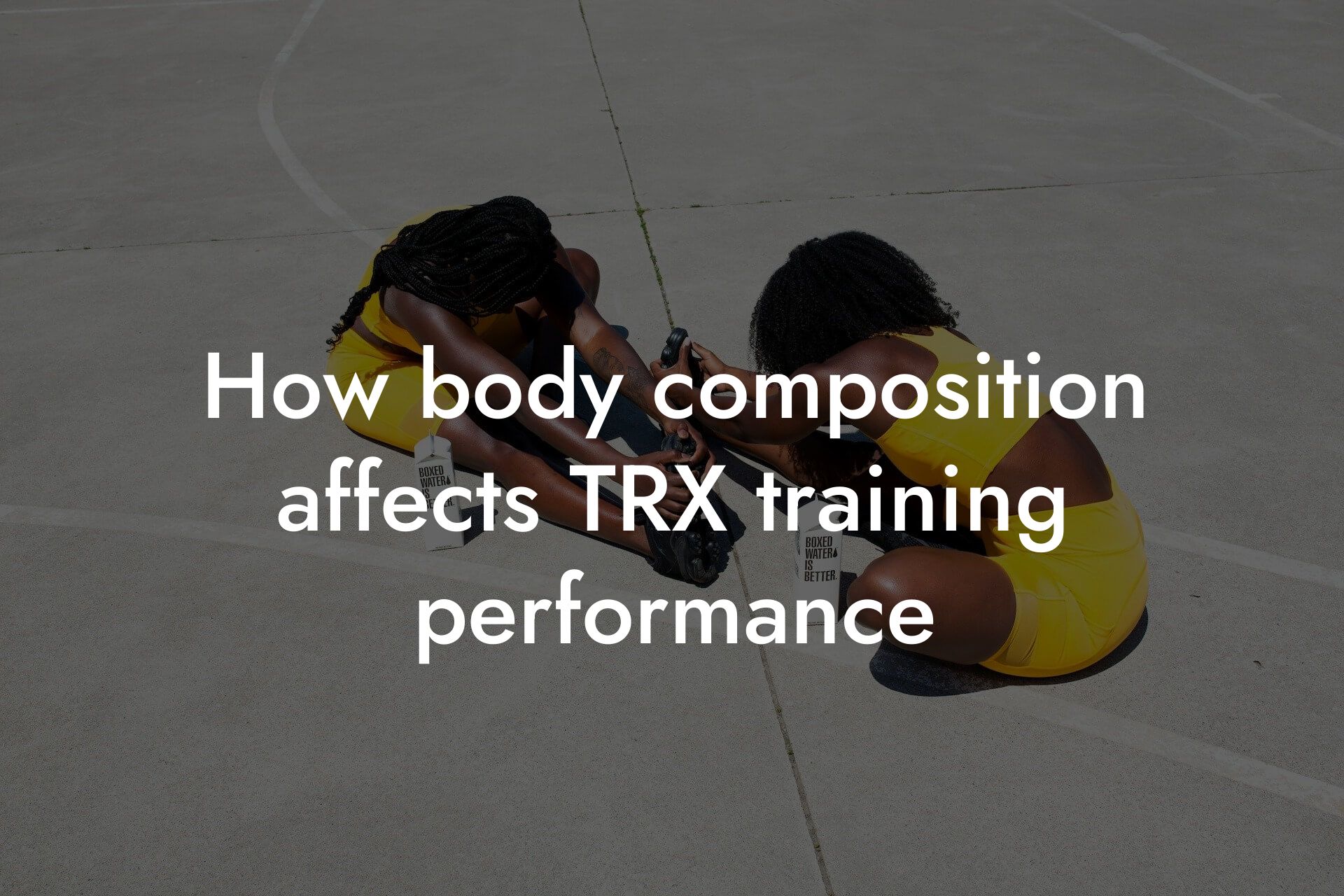As a high-earning professional, you understand the importance of maintaining a healthy and fit physique. However, with a demanding schedule, it can be challenging to prioritize exercise and recovery. This is where TRX training comes in – a suspension training system that can help you maintain muscle recovery while improving overall fitness. In this article, we'll delve into the world of TRX training and explore its benefits for muscle recovery, as well as provide tips and techniques for incorporating it into your busy lifestyle.
Table of Contents
What is TRX Training?
TRX (Total Body Resistance Exercise) is a form of suspension training that uses your body weight and gravity to provide resistance. Developed by former Navy SEAL Randy Hetrick, TRX training involves using a suspension strap system to perform a variety of exercises that engage multiple muscle groups simultaneously. This type of training is low-impact, making it an excellent option for individuals who want to avoid high-impact exercises that can put excessive strain on joints.
Benefits of TRX Training for Muscle Recovery
TRX training offers several benefits for muscle recovery, including:
• Reduced Muscle Soreness: TRX exercises are low-impact, which means they can help reduce muscle soreness and inflammation associated with high-intensity exercise.
• Improved Flexibility: TRX training incorporates dynamic movements that help improve flexibility and range of motion, reducing muscle tension and promoting recovery.
• Enhanced Blood Flow: TRX exercises engage multiple muscle groups, which helps improve blood flow and promote the delivery of oxygen and nutrients to the muscles, aiding in recovery.
• Core Engagement: TRX training emphasizes core engagement, which helps improve overall stability and reduces the risk of injury, allowing you to recover more efficiently.
How TRX Training Improves Muscle Recovery
TRX training improves muscle recovery by:
• Reducing Inflammation: TRX exercises are designed to reduce inflammation and muscle damage, promoting a faster recovery.
• Promoting Myofibril Repair: TRX training helps promote myofibril repair, which is essential for muscle growth and recovery.
• Enhancing Mitochondrial Function: TRX exercises improve mitochondrial function, which helps increase energy production and promote recovery.
Tips for Incorporating TRX Training into Your Busy Schedule
As a high-earning professional, finding time to exercise can be challenging. Here are some tips for incorporating TRX training into your busy schedule:
• Start Small: Begin with short, 20-minute TRX sessions, 2-3 times a week, and gradually increase the duration and frequency as your schedule allows.
• Find a TRX-Certified Trainer: Work with a TRX-certified trainer who can create a customized workout plan tailored to your schedule and fitness goals.
• Invest in a TRX Home Kit: Invest in a TRX home kit, which allows you to perform TRX exercises in the comfort of your own home, at any time.
TRX Exercises for Muscle Recovery
Here are some TRX exercises that can help promote muscle recovery:
• TRX Chest Press: This exercise targets the chest muscles and helps improve flexibility and range of motion.
• TRX Rows: This exercise targets the back muscles and helps improve posture and reduce muscle tension.
• TRX Lunges: This exercise targets the legs and glutes, helping to improve flexibility and balance.
• TRX Plank: This exercise targets the core muscles, helping to improve stability and reduce muscle soreness.
Combining TRX Training with DEXA Scanning
At Tano Performance Group, we understand the importance of tracking progress and monitoring body composition. That's why we recommend combining TRX training with DEXA scanning. DEXA scanning provides a comprehensive body assessment, including measurements of body fat, bone density, and muscle mass. By tracking these metrics, you can adjust your TRX training program to optimize muscle recovery and overall fitness.
Maintaining muscle recovery is crucial for overall fitness and well-being. TRX training offers a low-impact, effective way to improve muscle recovery while promoting overall fitness. By incorporating TRX training into your busy schedule and combining it with DEXA scanning, you can take your fitness to the next level and achieve your goals. Remember to start small, find a TRX-certified trainer, and invest in a TRX home kit to make the most of your TRX training experience.
Frequently Asked Questions
What is TRX training and how does it help with muscle recovery?
TRX training is a form of suspension training that uses your body weight and gravity to provide resistance. It helps with muscle recovery by increasing blood flow, reducing muscle soreness, and improving flexibility. TRX exercises engage multiple muscle groups simultaneously, which can help to reduce muscle imbalances and promote overall muscle recovery.
How does TRX training differ from traditional weightlifting?
TRX training differs from traditional weightlifting in that it uses suspension straps to provide resistance, rather than weights or machines. This allows for a more functional and dynamic workout that engages the core and stabilizer muscles, which can help to improve overall muscle recovery.
What are the benefits of using TRX training for muscle recovery?
The benefits of using TRX training for muscle recovery include increased flexibility, reduced muscle soreness, improved circulation, and enhanced overall muscle function. TRX training can also help to improve joint mobility and reduce the risk of injury.
How often should I incorporate TRX training into my workout routine for optimal muscle recovery?
We recommend incorporating TRX training into your workout routine 2-3 times per week, with at least one day of rest in between. This allows for adequate recovery time and can help to prevent overtraining.
Can I use TRX training as a standalone workout routine, or should I incorporate it into my existing routine?
TRX training can be used as a standalone workout routine, but it can also be incorporated into your existing routine to add variety and challenge. We recommend starting with 1-2 TRX workouts per week and gradually increasing frequency as you become more comfortable with the exercises.
What types of exercises can I do with TRX training?
TRX training offers a wide range of exercises that target different muscle groups, including squats, lunges, chest presses, rows, and core exercises. You can also modify exercises to suit your fitness level and goals.
How long does a typical TRX workout last?
A typical TRX workout can last anywhere from 20-45 minutes, depending on the intensity and complexity of the exercises. We recommend starting with shorter workouts and gradually increasing duration as you become more comfortable with the exercises.
Do I need any special equipment to get started with TRX training?
To get started with TRX training, you'll need a TRX suspension trainer, which can be purchased online or at a local fitness store. You'll also need a sturdy anchor point, such as a door or column, to attach the trainer to.
Is TRX training suitable for beginners?
Yes, TRX training is suitable for beginners. The exercises can be modified to suit different fitness levels, and the suspension trainer provides support and stability, which can help to reduce the risk of injury.
Can I use TRX training to improve my overall fitness and athleticism?
Yes, TRX training can be used to improve overall fitness and athleticism. The exercises engage multiple muscle groups simultaneously, which can help to improve strength, endurance, and agility.
How does TRX training compare to other forms of exercise, such as yoga or Pilates?
TRX training is a more dynamic and functional form of exercise compared to yoga or Pilates. While yoga and Pilates focus on flexibility and core strength, TRX training engages multiple muscle groups simultaneously and provides a more comprehensive workout.
Can I use TRX training to improve my posture?
Yes, TRX training can help to improve posture by strengthening the muscles that support the spine and improving flexibility in the shoulders and hips.
How does TRX training affect bone density?
TRX training can help to improve bone density by providing a weight-bearing stimulus that promotes bone growth and density. This can be especially beneficial for individuals at risk of osteoporosis.
Can I use TRX training to improve my body composition?
Yes, TRX training can help to improve body composition by increasing muscle mass and reducing body fat. The exercises engage multiple muscle groups simultaneously, which can help to boost metabolism and burn calories.
How does TRX training compare to traditional cardio exercises, such as running or cycling?
TRX training is a more functional and dynamic form of exercise compared to traditional cardio exercises. While cardio exercises focus on cardiovascular fitness, TRX training engages multiple muscle groups simultaneously and provides a more comprehensive workout.
Can I use TRX training to improve my athletic performance?
Yes, TRX training can help to improve athletic performance by increasing strength, power, and agility. The exercises can be modified to suit different sports and activities, and can help to improve overall fitness and athleticism.
How does TRX training affect muscle soreness?
TRX training can help to reduce muscle soreness by increasing blood flow and reducing inflammation. The exercises can also help to improve flexibility and range of motion, which can reduce the risk of injury.
Can I use TRX training to improve my flexibility and range of motion?
Yes, TRX training can help to improve flexibility and range of motion by increasing blood flow and reducing muscle tension. The exercises can also help to improve joint mobility and reduce the risk of injury.
How does TRX training compare to other forms of suspension training, such as gymnastics or aerial yoga?
TRX training is a more accessible and user-friendly form of suspension training compared to gymnastics or aerial yoga. The exercises are modified to suit different fitness levels, and the suspension trainer provides support and stability, which can help to reduce the risk of injury.
Can I use TRX training to improve my overall health and wellness?
Yes, TRX training can help to improve overall health and wellness by increasing strength, flexibility, and cardiovascular fitness. The exercises can also help to reduce stress and improve mood.
How does TRX training affect my joints?
TRX training can help to improve joint health by increasing flexibility and reducing muscle tension. The exercises can also help to strengthen the muscles that support the joints, which can reduce the risk of injury.
Can I use TRX training to improve my balance and coordination?
Yes, TRX training can help to improve balance and coordination by engaging the core and stabilizer muscles. The exercises can also help to improve overall athleticism and reduce the risk of injury.
How does TRX training compare to other forms of exercise, such as CrossFit or HIIT?
TRX training is a more functional and dynamic form of exercise compared to CrossFit or HIIT. While CrossFit and HIIT focus on high-intensity interval training, TRX training engages multiple muscle groups simultaneously and provides a more comprehensive workout.
Here are some related articles you might love...
- Improving core strength with TRX training
- Using DEXA scans to monitor progress in TRX training
- How body composition affects TRX training performance
- Balancing strength and flexibility in TRX workouts
- The importance of bone density in TRX fitness
- Strength training tips specific to TRX exercises
- Reducing body fat for better TRX workout results
- Nutrition tips for sustained energy during TRX sessions
- Preventing injuries during TRX training
Zak Faulkner
Zak Faulkner is a leading authority in the realm of physical health and body composition analysis, with over 15 years of experience helping professionals optimise their fitness and well-being. As one the experts behind Tano Performance Group, Zak has dedicated his career to providing in-depth, science-backed insights that empower clients to elevate their physical performance and overall health.
With extensive knowledge of DEXA technology, Zak specializes in delivering comprehensive body assessments that offer precise data on body fat, muscle mass, bone density, and overall physique. His expertise enables individuals to make informed decisions and achieve their fitness goals with accuracy and confidence. Zak’s approach is rooted in a deep understanding of human physiology, combined with a passion for helping clients unlock their full potential through personalised strategies.
Over the years, Zak has earned a reputation for his commitment to excellence, precision, and client-focused service. His guidance is trusted by top professionals who demand the best when it comes to their health. Whether advising on fitness programs, nutritional strategies, or long-term wellness plans, Zak Faulkner’s insights are a valuable resource for anyone serious about taking their health and fitness to the next level.
At Tano Performance Group, Zak continues to lead our Content Team revolutionising how professionals approach their physical health, offering unparalleled expertise that drives real results.




